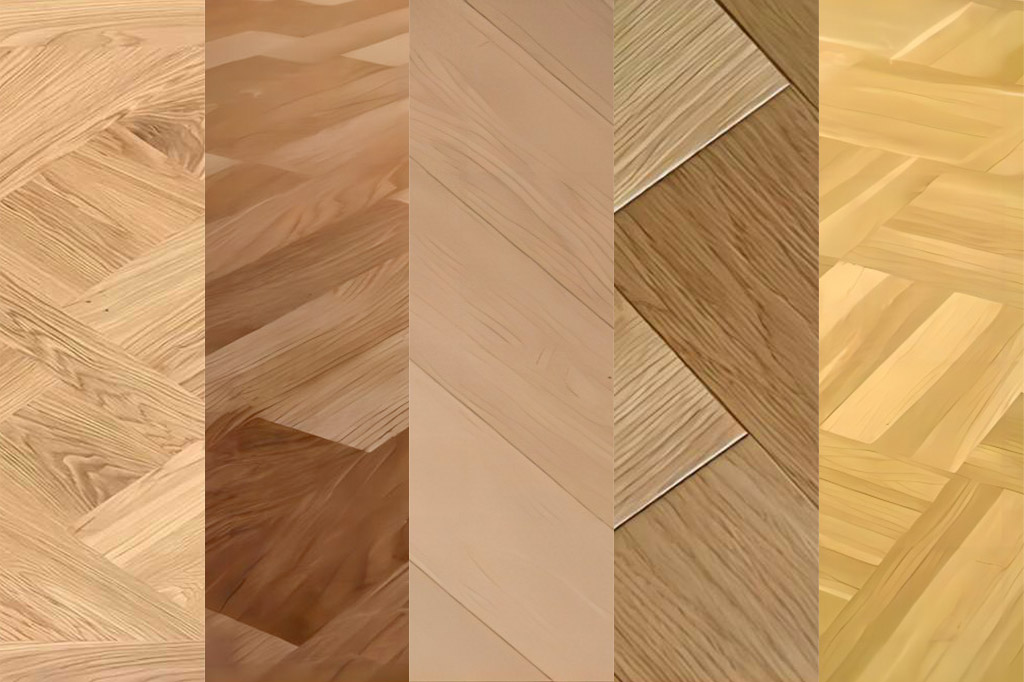Engineered wood flooring is the preferred choice of many due to its versatility, durability and beauty. This type of flooring is made from a surface layer of engineered wood bonded to multiple layers of other wood products for stability and resistance to environmental changes.
Several pattern options stand out due to their popularity and distinctive characteristics among the many available. Today we’ll explore five of the most popular engineered wood flooring patterns, examining the pros and cons of each pattern and the application scenarios for which they are suitable:
- Herringbone
- Chevron
- Versailles
- Parquet
- Straight and diagonal
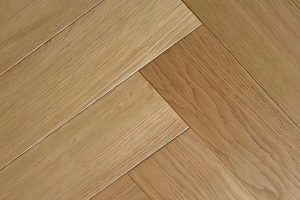
Table of Contents
Toggle1. Herringbone Pattern
Similar to a chevron but with each rectangular plank meeting another at a right angle, the herringbone pattern offers a broken zigzag design that is both traditional and engaging.
Pros | Cons |
|
|
Application Scenarios: Herringbone engineered wood flooring is ideal for areas in both residential and commercial spaces where elegance and a sense of tradition are valued, such as in dining rooms or corporate lobbies.
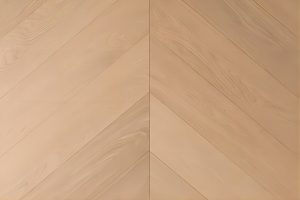
2. Chevron Pattern
The chevron engineered wood flooring arranges planks in a series of V shapes, creating a continuous zigzag effect. This pattern is sharp and modern, providing a dynamic visual impact.
Pros | Cons |
|
|
Application Scenarios: Chevron is a popular choice for commercial spaces such as offices or retail environments and residential areas like kitchens and hallways that benefit from an expansive visual effect.
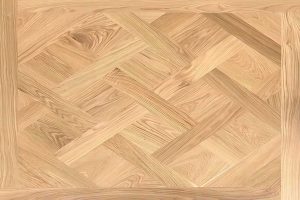
3. Versailles Pattern
The Versailles pattern, named after the famous Palace of Versailles, is known for its ornate and formal design. It features a complex interlacing of squares and diagonals, with a decorative motif at the center of each square.
Pros | Cons |
|
|
Application Scenarios: Ideal for formal settings such as grand entryways, official dining rooms, or hotel lobbies that aim to make a regal impression.
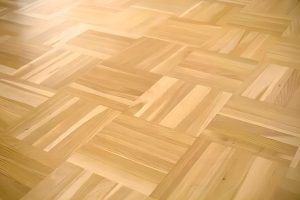
4. Parquet Pattern
Parquet flooring, like Versailles, includes a variety of geometric designs, but it typically features smaller planks and simpler geometric shapes compared to the Versailles pattern.
Pros | Cons |
|
|
Application Scenarios: Suitable for areas where a decorative touch is desired without overwhelming the space, such as living rooms, libraries, or conference rooms.
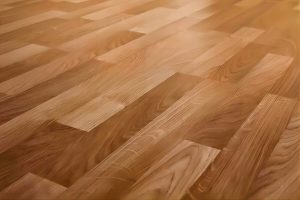
5. Straight and Diagonal Patterns
Straight planking is the simplest and most common layout, where planks are installed parallel to each other, often following the room’s longest dimension. Diagonal planks are laid at an angle to the walls, offering a more dynamic aesthetic.
Pros | Cons |
|
|
Application Scenarios: Straight patterns are suitable for any area, given their universal appeal, while diagonal patterns work best in spaces where an added element of visual interest is desired, such as in small rooms or unusual layouts to create a sense of expansion.
Conclusion
Based on the above, you have 5 flooring patterns to choose from to make an informed decision for your space.
When considering the pros and cons, evaluate your design style preferences, budget, and room dimensions. This way, you can ensure that you end up choosing a pattern that will both enhance the room and increase the value of your home.

